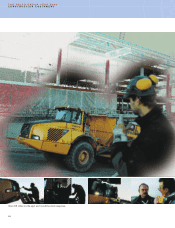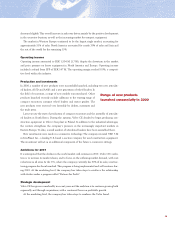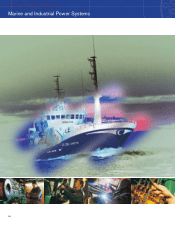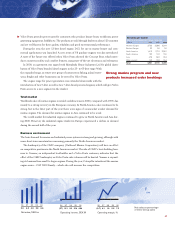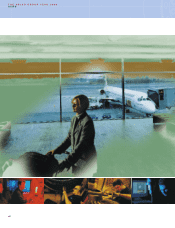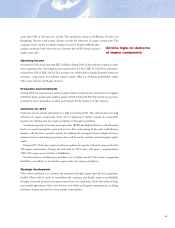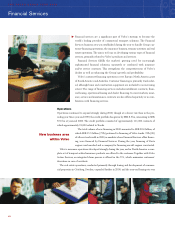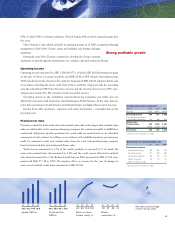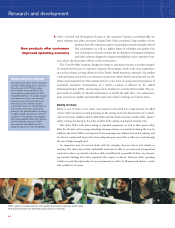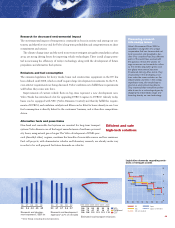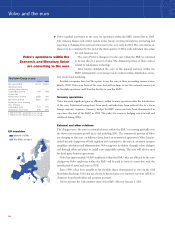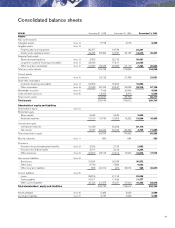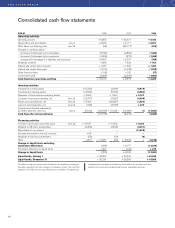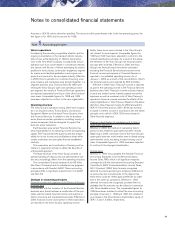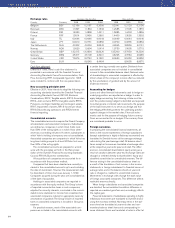Volvo 2000 Annual Report Download - page 46
Download and view the complete annual report
Please find page 46 of the 2000 Volvo annual report below. You can navigate through the pages in the report by either clicking on the pages listed below, or by using the keyword search tool below to find specific information within the annual report.
44
Research and development
Volvo’s research and development focuses on the customers’ business, environmentally ad-
apted solutions and safety awareness. During 2000, Volvo presented a large number of new
products that offer customers improved operating economy through reduced
fuel consumption, as well as a higher degree of reliability and quality. One
area of priority in research involves the development of transport telematics
and other software designed to improve profitability in the customer’s busi-
ness, which also has positive effects on the environment.
The “Cost-Per-Mile” program, designed to improve operating economy, is another example
of research that focuses on customers’ business. The program, which is the most comprehen-
sive in the industry, is being offered to Volvo Trucks’ North American customers. Via satellite
communications and at low cost, customers can process vehicle data for invoicing and can also
obtain rapid support from Volvo Action Service in the event of unexpected interruptions of
operations. Automatic determination of a vehicle’s position is effected via the Global
Positioning System (GPS), and messages can be handled via wireless Internet links. The pro-
gram makes it possible to schedule maintenance at exactly the right time – the communica-
tions received via satellite automatically report each vehicle’s mileage and current status.
Safety in focus
Safety is one of Volvo’s core values and research in this field has a high priority. So-called
“active” safety involves research pertaining to the driving and road characteristics of a vehicle,
such as electronic stability systems, ABS brakes and disc brakes on heavy trucks, while “passive”
safety is being developed in the form of safety belts, airbags and impact-resistant cabs.
The Volvo VHD, with driver airbag as standard equipment, as well as three-point safety
belts for all seats and an energy-absorbing steering column, was launched during the year. In
addition, the Volvo VHD was subjected to the most rigorous collision tests in the industry and
its cab was constructed to give the driver adequate space even after a rollover, in part through
the use of high-strength steel.
An important area of research deals with the interplay between driver and vehicle or
machine. The driver has to feel comfortable and must be able to see and reach all important
controls in order to operate the vehicle as safely and efficiently as possible.To date, very interest-
ing research findings have been reported with respect to drivers’ behavior while operating
vehicles, in part through studies of eye movements as well as by filming tired drivers – under
safe conditions, of course.
Global platform complete
During the year, Volvo Trucks launched
the Volvo VHD, designed for construc-
tion site work. All of Volvo's heavy-
truck models are being built on the
same global modular platform. With
the global platform, the quality of prod-
ucts improves at the same time that
lead times are shortened and costs
are reduced. The number of parts
involved has been cut substantially as
new models have been introduced
based on the global platform, resulting
in higher quality and greater safety for
customers. The platform technology is
also being applied within Volvo Buses,
which during the autumn of 2000
launched the Volvo 8500, the first
model based on the new TX platform.
▲
New products offer customers
improved operating economy
With a global modular platform, the quality of products improves at the same
time that lead times are shortened and costs are reduced.


